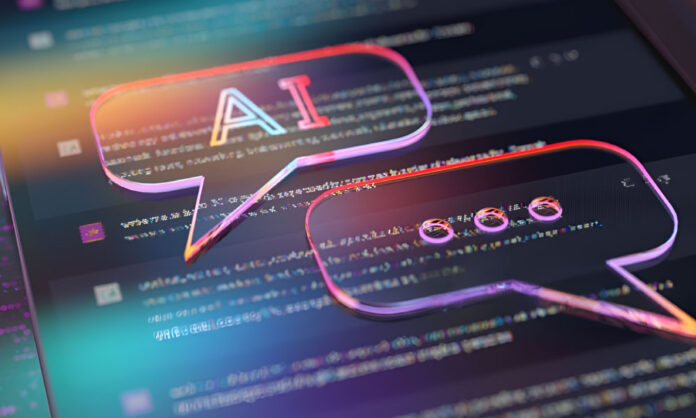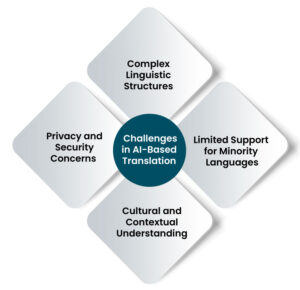Artificial intelligence through multilingual development produces major advancements in borderless communication systems. The growth of global organizations and people who travel seek solutions to break linguistic barriers through which artificial intelligence (AI) functions as the most efficient solution for effortless translation.
AI translation systems offer immediate contextual comprehension besides effective cultural meaning interpretation when performing conversions. International communication regards Multilingual AI as its premier system because NLP technology has achieved groundbreaking levels of performance through AI-based translation tools.
Organizations achieve better communication alongside accelerated processing for various business dealings, social communications, and customer assistance.
How Multilingual AI Works?
AI-driven translation systems function through the amalgamation of deep learning with NLP and neural network technologies. By deploying these technologies artificial intelligence achieves the ability to process words in addition to contextual meaning along with speech elements and regional linguistic traits. Here’s how Multilingual AI operates-
The training process for AI models employs large amounts of multilingual text, which helps them identify language patterns in translation operations.
The system of Neural Machine Translation differs from conventional phrase-based translation because it depends on deep learning methods to deliver fluent, natural translations. The system examines complete sentences instead of translating words separately because it maintains both content meaning and linguistic tone when processing text.
Machine learning algorithms improve over time by analyzing user feedback and real-world interactions. This sophisticated approach enables Multilingual AI to produce more accurate translations compared to rule-based or statistical methods.
How Multilingual AI is Changing Translation?
The translation systems leverage AI-powered technology, which runs on advanced machine learning models to deliver precise language interpretation. The previous translation methods depended on static dictionary systems and grammar rules, which led to poor or robotic output. Multilingual AI depends on neural networks combined with deep learning algorithms for dynamic language comprehension abilities. The models process enormous amounts of multilingual information to discover linguistic rules, which help them generate natural and flow-like translations.
The technological base of this revolution is Neural Machine Translation, which serves as its main driving force. With this technology, AI systems process text by sentences rather than word-by-word basis, which allows for preserving original meaning and natural tone. English speakers receive translations that reflect cultural elements and contextual nuances, making them more human-like. The ongoing improvement of AI-based translation happens through user interactions and feedback, which makes its output increasingly reliable with time.
Real-time AI translation provides instant cross-language communication between users, which is one of its important developments. Businesses actively introduce AI-driven translation tools to their platforms to deliver smooth multilingual interactions through video conferencing and live customer support systems. Users can perform effortless conversations without writing because speech recognition systems combine with artificial intelligence to provide voice translation capabilities.
The Impact of Multilingual AI on Global Communication
Multiple sectors undergo a transformation because Multilingual AI removes communication barriers while streamlining the dialogue process. Business organizations utilize AI translation services to reach international markets while avoiding costly human translator expense. AI chatbots operating within customer service teams provide multilingual interactions with users which leads to improved experience and better satisfaction levels.
AI translation tools through education provide greater accessibility to educational materials. Study materials and research papers as well as online courses become accessible to students worldwide without language barriers. The development provides special advantages to students in non-English-speaking areas where earlier they struggled with limited learning materials.
The entertainment sector and media industry undergo transformation through AI translation capabilities. AI subtitles and dubbing implemented by streaming services and social media and content creation platforms serve to bring content to broader audiences through automated linguistic solutions. People gain access to entertainment content, including movies, TV shows and online material in their native languages because of this development, which promotes cultural exchange among different populations.
Challenges in AI-Based Translation
Multilingual AI continues its fast development despite facing multiple obstacles that must be solved. Language translation across complex linguistic structures presents the main barrier to contextual accuracy maintenance. Commonly used languages offer strong performance for AI models, yet they show limited capability when processing minority languages and regional dialects. The process of achieving accurate translation for languages with minimal digital content continues to evolve.
The translation of cultural elements together with local expressions poses remarkable difficulties because of their unique character. Direct translation methods usually miss the intended semantic meaning in cultural phrases which belong to specific linguistic groups. The understanding of cultural contexts by AI systems needs continuous improvement for their ability to deliver accurate and meaningful translations.
The application of AI interfaces in translation results in privacy and security-related issues that need to be addressed. Organizations requiring sensitive data protection need to verify that their AI translation systems respect current data protection regulatory standards. Protecting secured AI models remains vital because they both prevent unauthorized access and safeguard confidential information that appears during translation procedures.
Developments expected in Multilingual AI
AI technology continues to progress which leads to a favorable outlook for Multilingual AI systems. Scientists actively research ways for AI to understand human speech patterns along with their replication which will result in natural translation methods. Advanced voice recognition coupled with speech synthesis technology will serve as better tools to eliminate language barriers when speaking.
Higher levels of support will emerge for minority languages, which comprise small language communities, in upcoming years. New AI training processes employ bigger data collections, which include underrepresented languages previously unseen in digital formats. AI translation is becoming more inclusive because this technological advancement enables people who speak minority languages to engage completely in worldwide dialogues.
Multilingual AI technology creates an enriching opportunity with augmented reality (AR) and virtual reality (VR).
AI translation systems integrated within virtual reality programs allow users to hold instantaneous communications with people of different languages. The new technology will enhance the performance of numerous industries, including tourism, gaming, and online collaboration because it adds depth to communication methods.
Businesses are implementing AI-generated multilingual content production, which enables them to develop marketing materials, articles, and videos simultaneously across different languages. Brands will improve their global audience engagement by leveraging this system to reach their worldwide audience without depending on human translators.
Concluding Words to Keep in Mind!
Multilingual AI development plans the course toward modernized translation processes and worldwide intercommunication systems. Artificial intelligence-based tools are dissolving language obstacles, so information becomes accessible while creating new international relationships. AI-powered translation solutions help businesses as well as educators, healthcare experts, content creators extend their reach to multiple audiences at higher operational levels.
The continuous development of AI technology succeeds in improving translation quality, although issues related to contextual understanding and cultural differences persist. The improvement of AI capabilities will lead to increased multilingual communication capabilities which will promote effortless global connections that are inclusive of all participants. Various industries currently integrate artificial intelligence thus showing its ability to revolutionize multi-language human engagement.
For those eager to explore cutting-edge AI solutions, check out YourTechDiet and discover how technology is redefining communication.
Read More:


